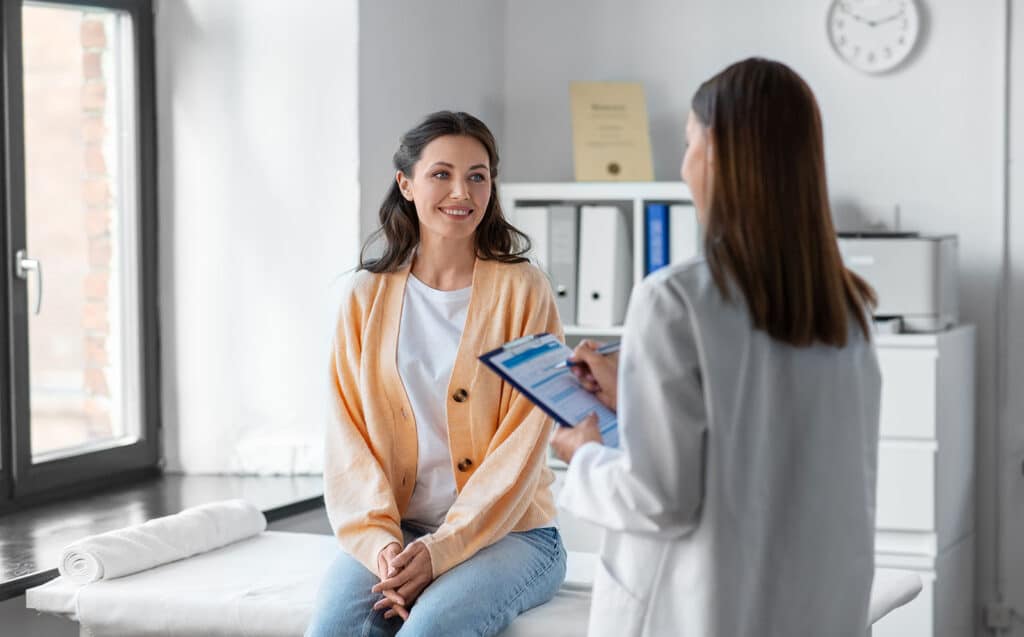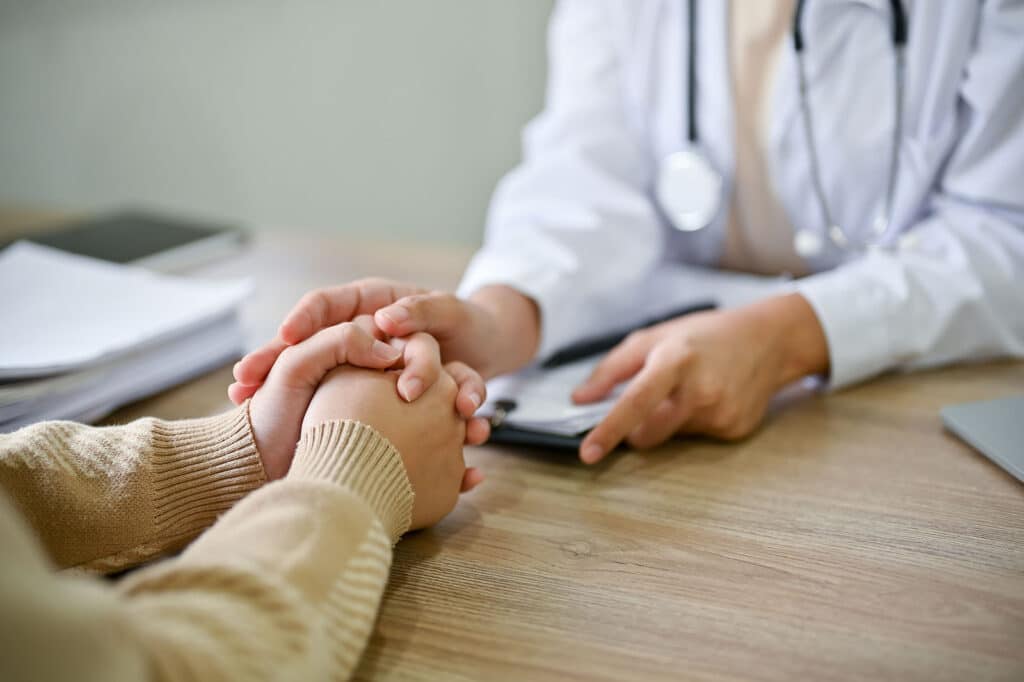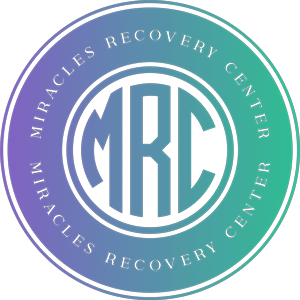
Medication-assisted treatment is a treatment approach that is clinically proven and uses medication at suitable doses along with counseling. The goal is to maintain treatment and long-term recovery. MAT pairs nondrug therapies, such as counseling or cognitive behavioral therapy, with an FDA-approved medication to treat OUD. Medications are used in MAT to:
- Help manage the physical symptoms of withdrawal, cravings, and the rewarding effects of drugs or alcohol and
- Attend to the physical changes that addiction causes in the brain
Table of Contents
- 1 Benefits of MAT
- 2 What medications are used in MAT?
- 3 The Opioid Crisis
- 4 Challenging the Myths
- 4.1 Myth 1: MAT just trades one addiction for another.
- 4.2 Myth 2: MAT is only for the short-term.
- 4.3 Myth 3: The patient’s condition is not bad enough to require MAT.
- 4.4 Myth 4: MAT increases a patient’s risk for overdose.
- 4.5 Myth 5: MAT will only disturb and slow down a person’s recovery process.
- 4.6 Myth 6: There is no proof that MAT is better than abstinence.
- 4.7 Myth 7: Insurance plans don’t cover MAT.
- 5 The Importance of Behavioral Therapies In MAT
- 6 Who Needs MAT for Opioid Addiction?
- 7 How Miracles Recovery Center Can Help
- 8 Therapies at Miracles
- 9 What Are You Waiting For?
Benefits of MAT
Furthermore, according to the Substance Abuse and Mental Health Services Administration (SAMHSA), this approach has been shown to:
- Improve patient survival
- Increase staying in treatment
- Decrease illicit drug use and other criminal activities
- Increase individual’s ability to get and maintain employment
- Improve birth outcomes among women who are pregnant and have substance use disorders (SUDs)
What medications are used in MAT?
For alcohol and opioid dependence, pharmacotherapies (medication) are safe and effective treatment including behavioral therapy and medically assisted treatment.
Medication for Opioid Use Disorder (OUD)
In the case of an opioid use disorder, There are three drugs approved by the FDA for the MAT treatment of opioid use disorder. All three medications show improved retention in treatment compared to placebo or no medication. Because of the chronic character of OUD, the need for continuing MAT should be re-examined from time to time. There is no maximum time for maintenance treatment and, for some people, treatment may continue indefinitely. Including assessment of withdrawal, management of detoxification, and long-term strategies to reduce the medical and psychosocial harms of OUD.
These medications are used to manage dependence on short-acting opioids such as heroin, morphine, and codeine. They are also used to treat addiction to semi-synthetic opioids such as oxycodone and hydrocodone. These medications work on the same brain receptors as the drug, however, they are safer and unlikely to cause the same negative behaviors.
Methadone
Methadone eases opioid withdrawal symptoms and is very helpful during detox. Methadone is a slow-acting opioid agonist. An agonist is a drug that activates certain receptors in the brain. This means that methadone activates the opioid receptors in the brain just like other opioids but:
- It has a low abuse potential
- It can be used during pregnancy
- It has a low potential for overdose
- It eases withdrawal and can be started before withdrawal begins
Methadone is sometimes used as a long-term medication for maintenance and is decreased slowly over time. It is only available through outpatient treatment programs and is dispensed daily.
Buprenorphine
Buprenorphine is a partial agonist which means it activates receptors in the brain but produces little response. Using this drug during withdrawal can make detox go quicker by reducing the cravings without the side effects of an agonist. Also:
- it may be used for long-term maintenance similar to methadone
- can be used during pregnancy
- low potential for abuse or overdose when used in a clinical setting
- Buprenorphine is sometimes mixed with Naloxone, an opioid antagonist (it binds to receptors and blocks the effect of other opioids). This prevents abuse and dependence.
Naltrexone
Naltrexone helps prevent relapse. It is also an opioid antagonist and can be taken in pill form or as an injection. If it is taken while opioids are still in your system, it will cause severe withdrawal symptoms.
The Opioid Crisis
In the heart of the opioid epidemic, communities across the country are facing increased demands for prevention and substance abuse treatment. The CDC has reported that:
- Heroin use among young adults has more than doubled in the past decade.
- More than 90% of people who use heroin also use at least one other drug.
- 45% of those who use heroin are also addicted to prescription opioids.
- Opioid overdoses from prescription increased 3 times in three years.
To battle this epidemic, organizations are increasingly using evidence-based practices such as MAT.
Alcohol Use Disorder (AUD)
Because people frequently abuse alcohol along with opioids, it should be mentioned here. It is the substance most often used in conjunction with other drugs, and it can also be treated with medications. In the treatment of alcohol use disorder, Disulfiram, Acamprosate, and naltrexone are often used.
Disulfiram
Disulfiram was the first medication approved by the FDA to treat alcohol dependence. It works by causing a severely toxic physical reaction about 10-30 minutes after ingesting alcohol. Disulfiram doesn’t reduce the urge to consume alcohol but it does provide motivation not to do it.
Naltrexone
Naltrexone will reduce the rewarding effects of alcohol and opioids in the brain. It also reduces the cravings for both drugs. People with intense cravings for alcohol will experience more benefits during addiction treatment than those whose cravings are not as intense.
Acamprosate
Acamprosate is approved for use in the maintenance of alcohol abstinence. By normalizing the alcohol-related changes in the brain from chronic alcohol consumption. And doing that reduces the symptoms of withdrawal and also reduces the potential to relapse.

Challenging the Myths
There are several popular myths or assumptions about using medication-assisted treatment for opioid use disorder or any substance use disorder (SUD) for that matter. They include:
Myth 1: MAT just trades one addiction for another.
Truth: MAT bridges the biological and behavioral parts of addiction. Research has shown that the combination of medication and behavioral therapies can successfully treat SUDs and help in supporting recovery.
Myth 2: MAT is only for the short-term.
Truth: Patients on MAT for at least 1-2 years have the best rates of long-term success. And there is no evidence of any benefits from stopping MAT.
Myth 3: The patient’s condition is not bad enough to require MAT.
Truth: MAT uses multiple different medication options that can be adjusted to fit the patient’s needs.
Myth 4: MAT increases a patient’s risk for overdose.
Truth: MAT helps to prevent overdoses. Even a single use of opioids after detoxing can result in a fatal overdose.
Myth 5: MAT will only disturb and slow down a person’s recovery process.
Truth: MAT has been shown to help patients in recovery by improving their quality of life and ability to handle stress. Most importantly, it helps reduce overdose deaths while patients begin recovery.
Myth 6: There is no proof that MAT is better than abstinence.
Truth: MAT is an evidence-based treatment and is recommended treatment of opioid addiction. It has been emphasized as a first-line opioid treatment program by:
- American Academy of Addiction Psychiatry
- American Medical Association
- The National Institute on Drug Abuse
- National Institute on Alcohol Abuse
- Substance Abuse and Mental Health Services Administration
Myth 7: Insurance plans don’t cover MAT.
Truth: As of May 2013, 31 state Medicaid Fee For Service programs covered methadone maintenance treatment in outpatient programs. Medicaid agencies change as to whether buprenorphine is on the Preferred Drug List. And Extended-release naltrexone is listed on the Medicaid PDL in over 60% of states.
The Importance of Behavioral Therapies In MAT
Medications manage the physical symptoms so that individuals can focus on counseling. Counseling is used to:
- Help people manage behaviors, thoughts, and emotions so they can focus on recovery and
- To address the behavioral aspects of their specific addiction.
Counseling is vital to the recovery process. In therapy, the individual can explore why they started abusing substances in the first place. Sometimes, the patient discovers an underlying mental health issue that they were treating through drug abuse. There are several commonly used behavioral therapies in the treatment of OUD. They include:
- Individual Therapy: During these sessions, a person may begin to recognize their triggers for substance abuse, including emotional issues. During individual therapy, a patient works one-to-one with their counselor and all sessions are strictly confidential.
- Group Therapy: Group therapy sessions typically consist of 5 to 15 people with 2 or more therapists. These sessions allow seeing different perspectives on recovery and relapse prevention. The group provides support and accountability.
- Cognitive-Behavioral Therapy (CBT): CBT helps to adjust the individual’s behavior and expectations as they relate to drug use. This is a popular, short-term therapy that aids in learning new coping skills and examining how their negative thoughts brought about negative behaviors.
- Contingency Management (CM): Contingency management uses a voucher system where patients can earn points for clean drug tests, attending 12-step meetings, etc. Vouchers can be exchanged for things that strengthen healthy living behaviors such as a gym membership or a healthy dinner at a local restaurant.
Who Needs MAT for Opioid Addiction?
Anyone who has become dependent on opioids needs medication-assisted treatment. When people have an OUD, they feel sick when there are little or no opioids in their bodies. This is known as withdrawal and it is an indication of opioid addiction. Along with intense cravings, it can make recovery especially difficult.
By reducing cravings and withdrawal, MAT allows the person to focus on returning to their life’s activities, responsibilities, and relationships in healthier and more productive ways. Besides tailoring medications to deal with cravings and withdrawal, a MAT approach also includes therapy or counseling to address behavioral issues, prevent relapse and support recovery.
How Miracles Recovery Center Can Help
If you are struggling with an opioid use disorder or any substance use disorder, you know that professional treatment is essential. Miracles Recovery Center has programs and treatments that are personalized for each client. Our treatment plans include:
Partial Hospitalization Program (PHP)
Unlike inpatient or residential treatment options, if you are in our PHP, you will live at home instead of at the facility. However, you will attend sessions at the facility 5 times a week, 5 hours per day, during the day or evening, whatever works best for you.
Intensive Outpatient Treatment Program (IOP)
If you are in our intensive outpatient program, you will reside at home and attend treatment sessions 3 to 5 times a week for 3 hours per day. Once again, we offer a flexible schedule. The main idea is to make it convenient for you to stay in treatment. This program can also be used as a step-down from PHP. Many times people are not confident in their coping abilities and need another level of care.
Outpatient Treatment Program (OP)
During the outpatient program, you are only required to attend treatment for 9 hours per week. Our flexible scheduling makes it easy to continue your treatment. The OP is frequently chosen as a step-down from IOP. It depends on your confidence in your recovery. Statistics show that the longer an individual stays in some level of treatment, the better their recovery outcomes.
Therapies at Miracles
In addition to our outstanding levels of care, our experienced and licensed therapists will help you through our various treatment models including:
- Cognitive-Behavioral Therapy
- Medication-Assisted Treatment
- Group Therapy
- Individual Therapy
- Spirituality
What Are You Waiting For?
Miracles Recovery Center is ready and waiting to hear from you. Whether it is for yourself or a loved one. We are located in South Florida on the beautiful “Treasure Coast”… a beautiful, peaceful place to rest and repair your body and mind. Waiting will not help and may only make things worse. Contact us. Let’s get you on the journey to recovery and well-being.
FAQ
What is Medication-Assisted Treatment (MAT)?
What types of addiction is Medication-Assisted Treatment (MAT) used for?
What medications are used in Medication-Assisted Treatment (MAT) for addiction?
How does Medication-Assisted Treatment (MAT) help with addiction?
How long does Medication-Assisted Treatment (MAT) last?
Is Medication-Assisted Treatment (MAT) safe?
Is Medication-assisted treatment (MAT) covered by insurance?
How effective is Medication-Assisted Treatment (MAT) in treating addiction?
Who is a good candidate for Medication-Assisted Treatment (MAT)?

